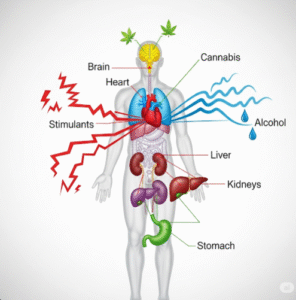Overview
Gigantism is a rare endocrine disorder characterized by excessive growth and height due to overproduction of growth hormone (GH) during childhood or adolescence, before the growth plates close. If untreated, it can lead to extremely tall stature and complications affecting multiple organ systems. South Korea offers advanced diagnostic and treatment options, including surgical, medical, and radiological interventions.
What is Gigantism?
Gigantism occurs when the pituitary gland produces too much growth hormone in children and adolescents, leading to abnormal increases in height and growth of bones and tissues. The condition is most commonly caused by a benign pituitary tumor (adenoma) that secretes excess GH.
Symptoms
Signs and symptoms of gigantism include:
- Rapid and excessive growth in height and size of hands and feet
- Enlarged facial features (prominent jaw and forehead)
- Delayed puberty or irregular sexual development
- Muscle weakness
- Joint pain and skeletal deformities
- Headaches or vision problems (if caused by pituitary tumor)
Causes
- Pituitary adenoma: Benign tumor in the pituitary gland secreting excess GH
- Genetic mutations: Rare hereditary syndromes may contribute
- Overproduction of GH due to other endocrine disorders
Risk Factors
- Family history of pituitary disorders or genetic syndromes
- Presence of pituitary tumors in childhood
- Early childhood exposure to factors affecting endocrine function (rare)
Complications
- Skeletal abnormalities (kyphosis, scoliosis)
- Cardiovascular issues such as hypertension and cardiomegaly
- Metabolic disorders including diabetes mellitus
- Increased risk of sleep apnea
- Joint pain and arthritis
- Psychological and social challenges due to extreme height
Prevention
- Regular growth monitoring in children
- Early evaluation of abnormal rapid growth
- Genetic counseling for families with history of pituitary disorders
Treatment Options in Korea
South Korea provides state-of-the-art endocrine care for gigantism, often involving a combination of surgery, medications, and radiotherapy:
- Diagnosis
- Blood tests: Measure GH and IGF-1 levels
- Imaging: MRI or CT scans to detect pituitary tumors
- Visual field testing: To evaluate optic nerve compression
- Medical Therapy
- Somatostatin analogs (e.g., octreotide, lanreotide): Reduce GH secretion
- GH receptor antagonists (e.g., pegvisomant): Block GH effects
- Dopamine agonists (e.g., cabergoline): Sometimes used to suppress GH production
- Surgical Intervention
- Transsphenoidal surgery: Minimally invasive removal of pituitary tumors
- Performed in major Korean hospitals like Severance Hospital, Samsung Medical Center, and Asan Medical Center
- Radiotherapy
- Considered when surgery and medications are insufficient
- Focused techniques minimize damage to surrounding tissues
- Post-Treatment Care
- Long-term monitoring of hormone levels
- Management of complications like joint or cardiovascular issues
- Psychological support for social and emotional well-being













